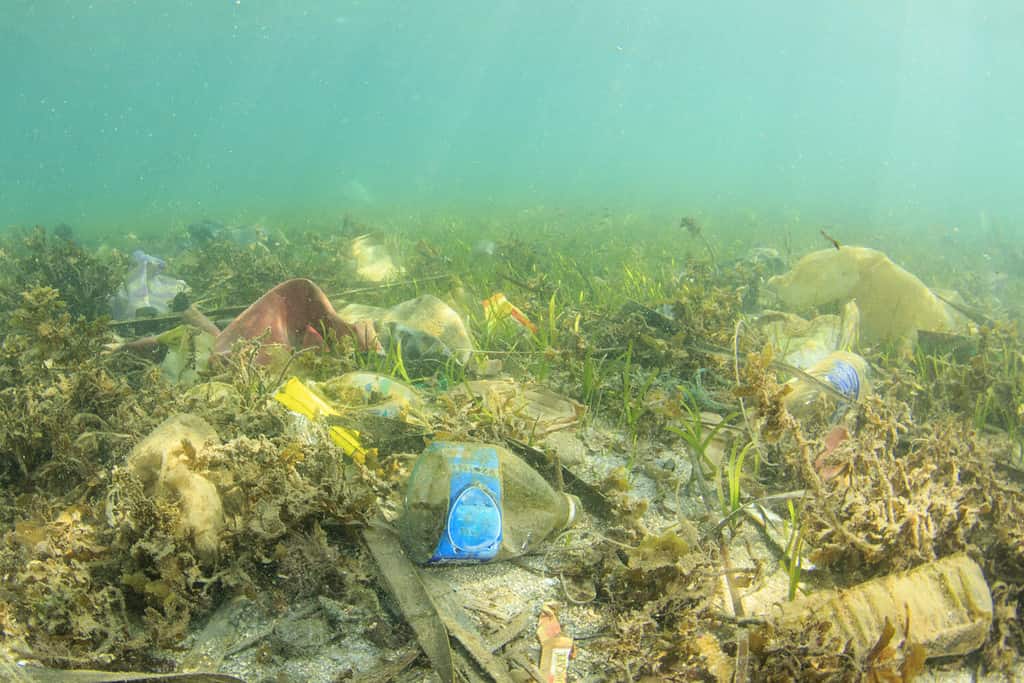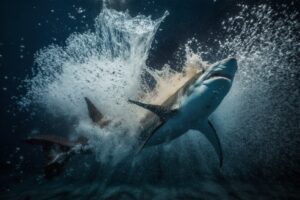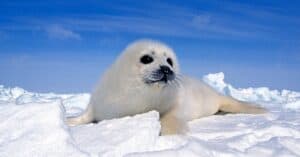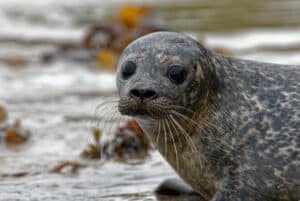This action-packed video shows the amazing rescue of a baby seal by a teenage human. A member of Ocean Conservation Namibia (OCN), the teenager and his father noticed a baby among the colony of cape fur seals in distress with a ring of plastic around its neck.
Watch the Amazing Baby Seal Rescue Below!
Together the pair of humans discuss their plan. When they are ready, they jump into action. The seals scatter, terrified of the sudden intrusion. Using a net, the teenager captures the baby seal. Time is of the essence as the terrified baby screams for help. The father gently holds the seal in place with gloved hands while the teenager completes the seal rescue, cutting away the plastic.
What an incredible scene to watch! The baby seal surely would have died as it grew and the plastic cut into its throat. Let’s learn more about OCN and its efforts to help rescue seals affected by plastic and other rubbish in the ocean.

Seals often become entangled in fishing nets or plastic which threatens their lives.
©Ian Dyball/iStock via Getty Images
How Many Seals Are on the Namibian Coast?
Cape fur seals number more than one million off the Namibian coast of Africa. They face many dangers, but one of the most significant remains entanglement in plastic and fishing lines. Thankfully, the seals do not encounter their natural predators such as great white sharks and orcas (killer whales) in this area. However, the very real human threat still finds them here.
What is OCN and How Do They Rescue Seals?
OCN, founded in 2013, actively rescued over 3500 seals from entanglements since their inception. From fishing nets and wires to commonly used plastics, the charity group rescues as many seals as they can from this dangerous human waste. As a non-profit 501(c)3 entity, Ocean Conservation International (their registered name) aims to “motivate individuals all over the world to change their own behavior towards a sustainable future.”
While improperly disposing of fishing materials remains illegal in the area, fishhooks and lines still injure seals every day. A simple scroll through their YouTube page shows many seal rescues of the same sort. Another way OCN rescues seals is through their open opposition to the annual Namibian Seal Harvest. This practice allows up to 60,000 seal pups and 8,000 adult male bulls to be slaughtered each year in the name of commercial use.
The Namibian Parliament created the seal harvest as a way to reduce the exploding seal population, but others worldwide see the detriment it causes to the species. OCN explains that the seal harvest at its current rate is unsustainable. They also confirmed that harvesting alpha male bulls, which should be breeding, causes a decline in the quality and strength of the species.

Plastic pollution poses a significant threat to fur seals that become entangled in it.
©Rich Carey/Shutterstock.com
How Can You Help?
Take a moment to review OCN’s donation page. Learn more about the seal harvest, as well as, the effect plastic pollution has on the colonies. If you don’t have money to donate, consider joining a local beach clean-up project! Remind your friends and family to recycle and try to cut down on single-use plastics. If we destroy our ocean entirely, the entire Earth will suffer.
The photo featured at the top of this post is © Ian Dyball/iStock via Getty Images
Thank you for reading! Have some feedback for us? Contact the AZ Animals editorial team.







